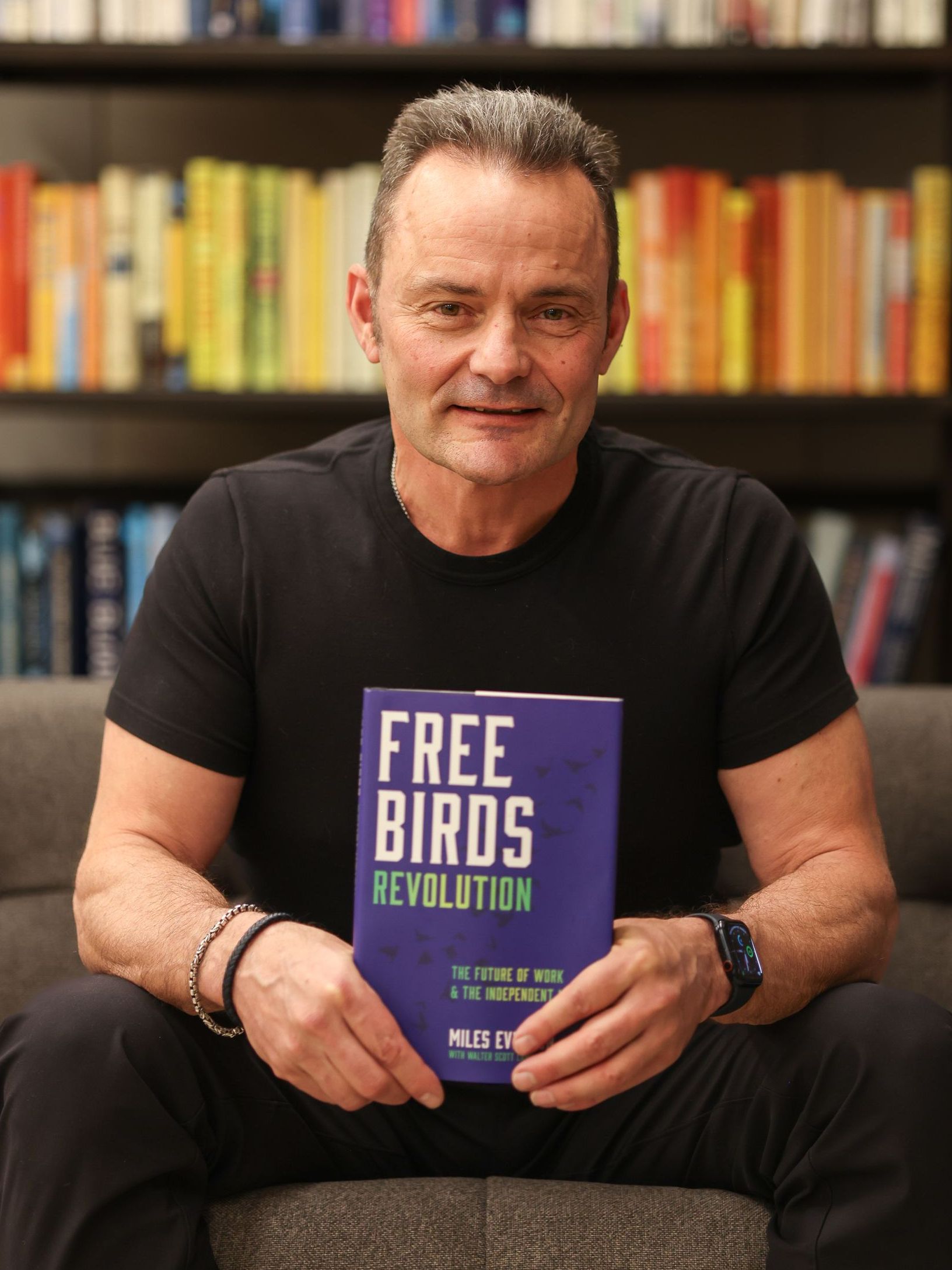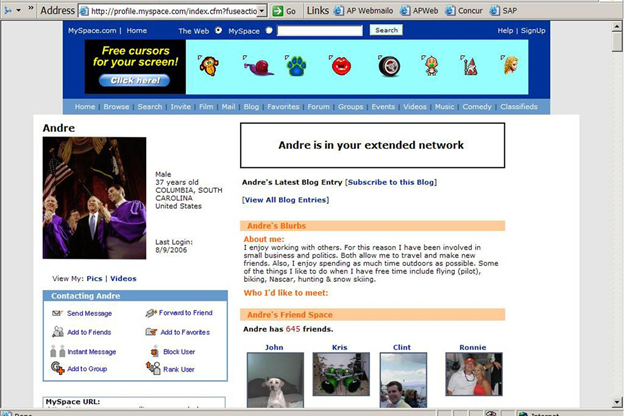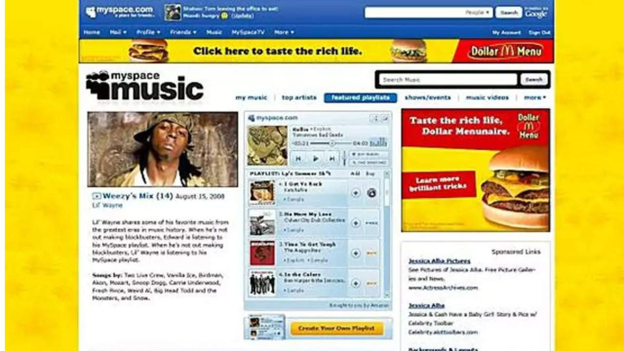This platform dominated the early years of social media. Sadly, its dominance didn’t last…
In this article, we’ll look at the story of one of the first major players in the social media space. Keep reading to see how its story offers important lessons on adapting to change, meeting evolving user expectations, and maintaining strategic focus in a competitive market. |
|
This platform dominated the early years of social media. Sadly, its dominance didn’t last… Long before social media became massively popular, Myspace (formerly formatted as MySpace ) was a name many early trendsetters knew well. Established in 2003 by Tom Anderson and Chris DeWolfe, Myspace emerged as a social networking platform where users could make profiles, share music, and connect with friends.
Myspace allowed users to personalize their profiles using HTML and CSS, resulting in uniquely customized pages. This creative freedom appealed especially to teenagers and young adults looking for a way to express themselves online. What also set Myspace apart was its strong focus on music. The platform enabled artists to share their work directly with fans, building a vibrant community centered around music and pop culture. By 2005, Myspace had amassed 20 million users, becoming the world’s most visited social networking site. Building on this success, Myspace was acquired by News Corporation in 2005 for USD 580 million. The deal brought substantial financial backing and opportunities for integration with News Corporation’s extensive media portfolio. Initially, this appeared to be a beneficial move, enabling Myspace to enhance its features and strengthen its infrastructure. However, this acquisition ultimately did more harm than good. Myspace’s Fall from Dominance As time passed, Myspace began to rapidly lose its user base. Market research by Comscore revealed the extent of this decline, showing that the platform lost 10 million users between January and February 2011, and had dropped from 95 million to 63 million users from the same period in 2010. The decline was particularly sharp in February 2011, with U.S. traffic falling by 44% year-over-year to just 37.7 million visitors. This dramatic drop in user engagement made advertisers increasingly reluctant to commit to long-term deals with Myspace, as the platform’s audience shrank and its influence waned. Faced with mounting financial losses and a deteriorating user base, Myspace was forced to cut costs—leading to layoffs in January 2011. With recovery appearing out of reach, News Corporation made the decision to sell the platform. In June 2011, Myspace was sold to Specific Media for just USD 35 million, a fraction of what it had paid six years earlier. To understand how Myspace lost its momentum, it’s important to look at a few key decisions and trends that led to its decline. At the time of its launch, it seemed unlikely that Myspace would ever lose its dominant position in the social media space. Unfortunately for Myspace, the rise of Facebook and a host of other missteps proved to be detrimental to its success. So, what exactly led to Myspace’s downfall?
Failing to innovate and adapt to changing user expectations, Myspace gradually lost its audience as people migrated to platforms that were more modern, intuitive, and visually appealing. Myspace’s Decline Through the Lens of RDS As Professor Joel Litman and Dr. Mark L. Frigo emphasized in the book, “Driven,” companies that overlook customer needs and fail to innovate risk losing market position rapidly. This was especially true in the 2000s and 2010s as the world saw a rapidly evolving digital landscape. Myspace’s downfall serves as a lesson in the importance of delivering a consistent, user-centered experience. As the platform became increasingly difficult to navigate and visually overwhelming, users naturally gravitated toward cleaner, more intuitive alternatives such as Facebook. Today, Myspace still exists—but it’s only a shadow of what it once was. By 2019, Myspace experienced a major data loss that further damaged its appeal, as seen by how its monthly visitors had dropped to seven million that same year. In October 2024, Myspace entered a read-only mode, halting the publication of new articles. During this period, much of the site’s media functionality was impaired, with many songs and images becoming inaccessible. However, by early 2025, there were signs of renewed activity: Media uploads resumed, and new articles began appearing on the platform. Despite these updates, Myspace continues to operate with limited functionality, and its user base remains significantly reduced compared to its peak years. The takeaway? Staying relevant in today’s fast-moving digital world demands more than just keeping up—it requires deeply understanding user needs, embracing change, and relentlessly innovating to stay ahead of the curve. — If you’re looking to gain a better understanding of Return Driven Strategy and Career Driven Strategy, we highly recommend checking out “Driven” by Professor Litman and Dr. Frigo. Click here to get your copy and learn how this framework can help you in your business strategies and ultimately, in ethically maximizing wealth for your firm. Hope you found this week’s insights interesting and helpful. EXCITING NEWS AHEAD The world of work has shifted, and there’s no going back. The barriers to entry have never been lower for talented professionals to work independently, and today’s massive external workforce is hardly a pandemic-produced fad. Business owners can only survive in the new work landscape by partnering with this deep talent pool. With decades of experience in both small-business entrepreneurship and executive management at PwC, I truly believe that the future of work is independent. With that, I’m happy to share with you that my book, co-authored with Walter Scott Lamb, is now available on Amazon! Free Birds Revolution: The Future of Work & The Independent Mind This new bestseller is an essential read for both independent professionals and corporate executives. Here, we provide educational and practical guides to unpack the ever-growing workforce and offer you crucial ways to become a client of choice. Click on the link above to order your copy. Let this bestselling book help you future-proof your career and organization in the new world of work. Stay tuned for next Tuesday’s Return Driven Strategy! What do you think is the pathway to a firm’s superior financial performance? Learn more about RDS’ third foundation in next week’s article! |

Miles Everson
CEO of MBO Partners and former Global Advisory and Consulting CEO at PwC, Everson has worked with many of the world's largest and most prominent organizations, specializing in executive management. He helps companies balance growth, reduce risk, maximize return, and excel in strategic business priorities.
He is a sought-after public speaker and contributor and has been a case study for success from Harvard Business School.
Everson is a Certified Public Accountant, a member of the American Institute of Certified Public Accountants and Minnesota Society of Certified Public Accountants. He graduated from St. Cloud State University with a B.S. in Accounting.




